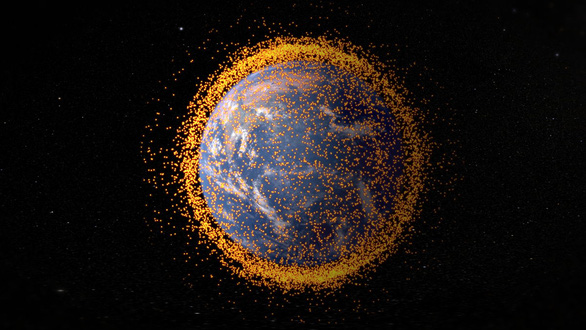Old Russian rocket engine broke up in Earth orbit

Image depicting the amount of space junk surrounding the Earth – Photo: NASA
The 18th Space Defense Squadron said an additional 16 event-related space debris is being tracked.
The above object is numbered 32398. Tpig page RussianSpaceWeb.comobject number 32398 is an old rocket engine that helped put three GLONASS (Russian GPS navigation system) satellites into orbit in 2007.
Astrophysicist Jonathan McDowell at the Harvard-Smithsonian Center for Astrophysics said the GLONASS spacecraft took off from atop a Russian Proton rocket. Space.com.
Mr. McDowell explained in a series of tweets on May 3 that the engines when idle will accelerate faster than the parent rocket. The ullage engines (small rocket engines) located in the upper stage of the Proton rocket are called SOZ engines. There are 64 engines of this type currently in Earth orbit.
SOZ engines do not use up their propellant when they fire. They tend to explode years or decades later, leaving a bunch of debris in orbit. Recently, at least 54 SOZ engines have exploded.
According to Mr. McDowell, the SOZ engine that just blew up was orbiting the Earth in a highly elliptical path. The position of the engine closest to Earth is about 388km and the furthest is 19,074km.
Space junk is a major concern for satellite operators and space mission planners.
The European Space Agency (ESA) estimates that around 36,500 pieces of debris at least 10cm wide are orbiting the Earth. Earth’s orbit can hold about 1 million objects about 1-10cm in diameter.
Russia replenished the debris population with an anti-satellite test (ASAT) in November 2021. The country destroyed one of its disused satellites with a rocket, creating a new debris field in the same orbital region as the International Space Station (ISS). The ISS operators had to conduct engine fires to avoid the Russian ASAT debris.
at Blogtuan.info – Source: tuoitre.vn – Read the original article here



